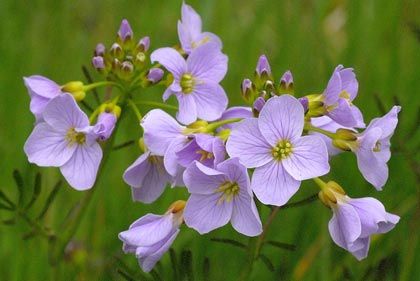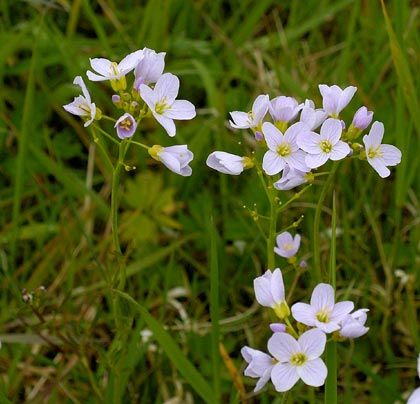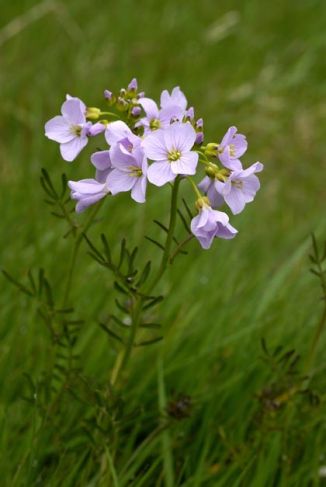This is a hairless perennial which tends to favour wet habitats such as marshes and damp meadows. It is also known as 'Lady's Smock' as the flower was said to resemble a milkmaid's smock. Its 12-20mm flowers have four broad, overlapping, lilac-pink, pink or white petals and appear in April, lasting until June. It has broad root leaves in a loose rosette while its stem leaves are narrow with numerous leaflets. Its seeds are contained in elongated, smooth, ascending siliquas. It is a larval foodplant of the Orange-tip butterfly. It is a native plant and belongs to the large family Brassicaceae.
I first identified this plant in 1976 in Roundwood, Co Wicklow and photographed it in Laragh, Co Wicklow in 1988 and Gibletstown, Co Wexford in 2006.
If you are satisfied you have correctly identified this plant, please submit your sighting to the National Biodiversity Data Centre




